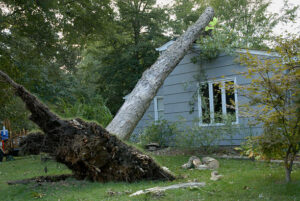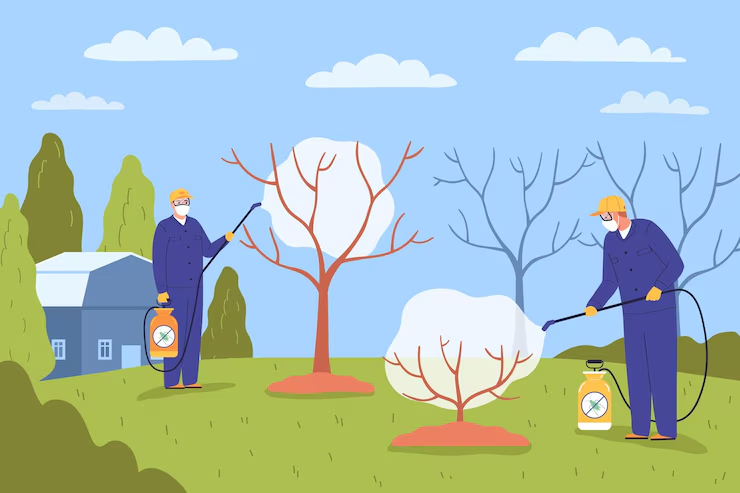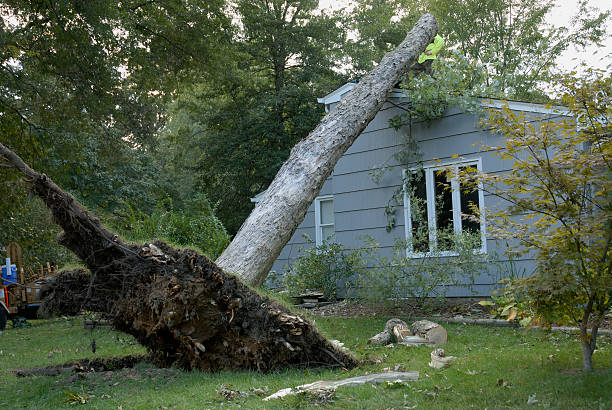Signs of a Structurally Unstable Tree and When to Take Action
Trees are fantastic. They provide shade, boost air quality, and make properties look great. But when a tree becomes unstable, it’s not just an eyesore—it’s a serious hazard. High winds, storms, or even just the weight of its own branches can cause a weak tree to collapse, leading to property damage, injuries, or even fatalities.
Knowing what to look for early can save you time, money, and a whole lot of stress. So let’s break it down.
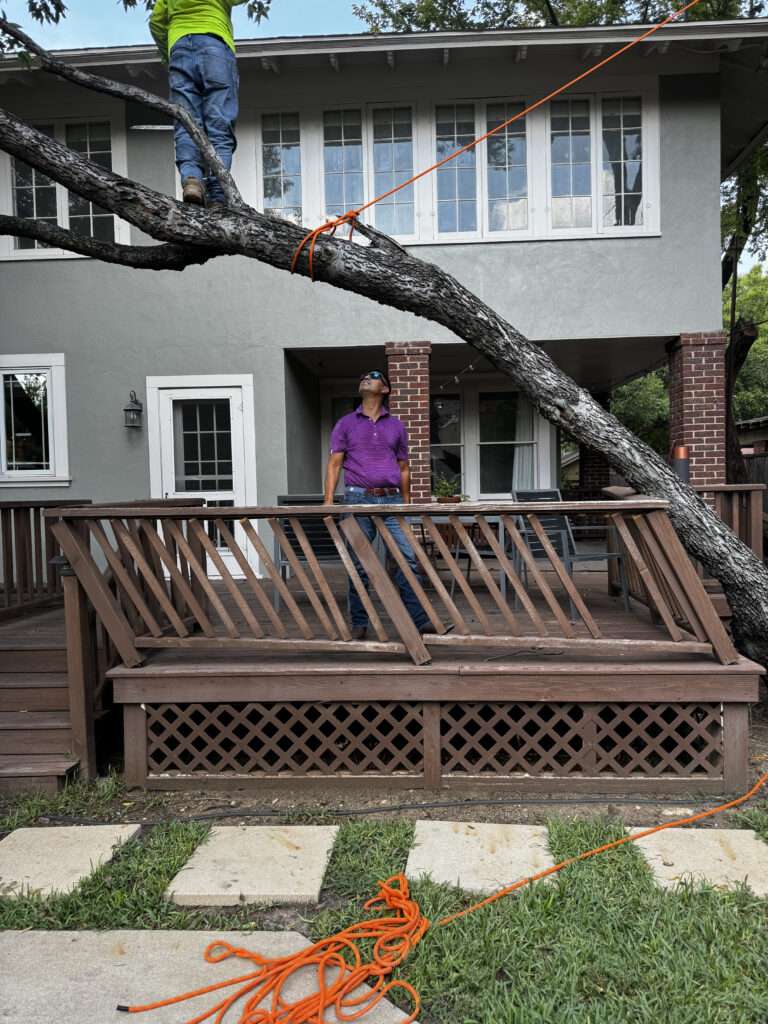
1. Cracks, Splits, and Cavities in the Trunk
The trunk is the backbone of the tree. When it weakens, the entire tree is compromised.
- Deep vertical cracks suggest internal stress or decay.
- Large cavities mean internal rot is eating away at the tree’s strength.
- Splits in the trunk can lead to sudden limb failure—even in mild weather.
What to Do:
If you notice deep cracks or hollow spots, call an arborist. They can determine if the tree needs bracing, cabling, or removal.
2. Sudden or Excessive Leaning
A slight lean is normal. A sudden tilt is not.
- A tree leaning more than 15 degrees likely has root damage or shifting soil.
- Exposed roots at the base? That tree is losing grip.
- Cracked soil around the trunk? The roots are detaching, making it unstable.
What to Do:
If a tree is leaning toward a house, driveway, or sidewalk, get it checked ASAP. If it poses a risk, removal might be the only option.
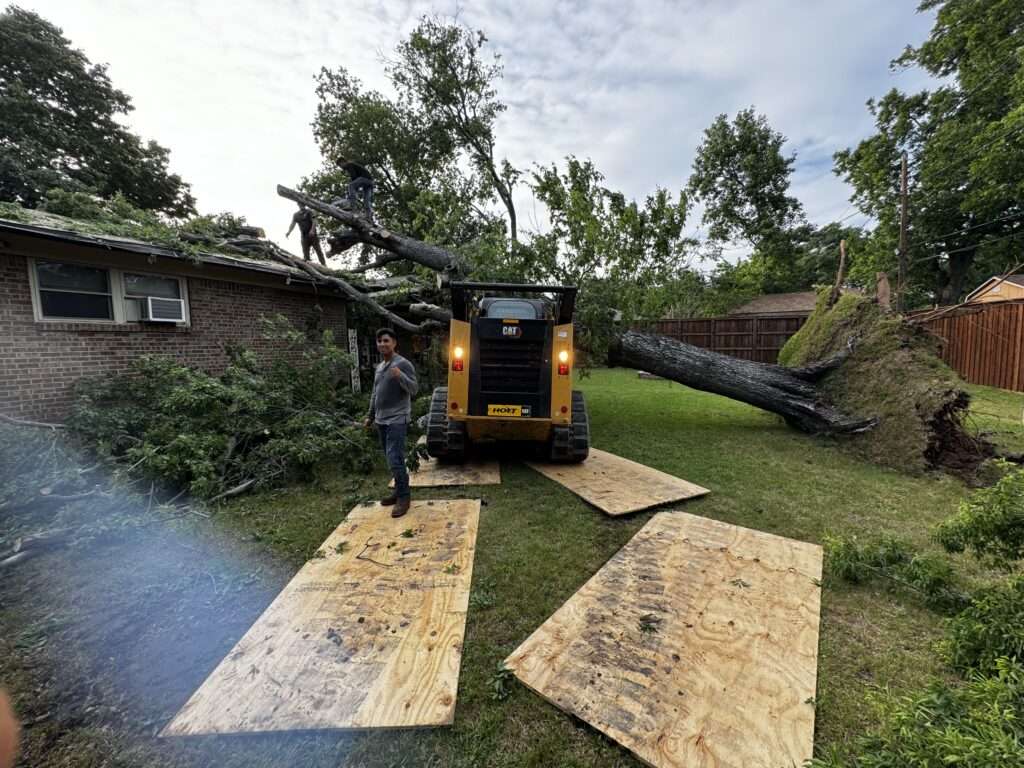
3. Dead, Brittle, or Hanging Branches
Healthy branches bend. Weak branches snap.
- Large dead limbs can fall unexpectedly—especially in a storm.
- Hanging or broken branches (a.k.a. “hangers”) are dangerous.
- Clusters of dead branches at the top may signal disease or root issues.
What to Do:
Regular pruning can keep your tree strong. If deadwood is everywhere, it’s time for an arborist to inspect it.
4. Peeling or Missing Bark
Bark protects the tree. When it starts falling off, something’s wrong.
- Cankers (wounds in the bark) can lead to infections.
- Smooth, exposed wood underneath means the tree is rotting.
- Large patches of missing bark could indicate advanced decay.
What to Do:
If bark loss is widespread, don’t ignore it. Get an expert opinion before it’s too late.

5. Root Damage and Decay
Roots anchor the tree. When they fail, the whole tree follows.
- Mushrooms or fungi at the base = root rot.
- Severed roots (often due to construction) = major instability.
- Soft, spongy wood near the base? That tree isn’t standing much longer.
What to Do:
If you suspect root damage, avoid disturbing the area and call in a professional.
6. Sparse or Discolored Foliage
Leaves don’t lie. If the canopy looks off, the tree is struggling.
- Thinning leaves or branch dieback suggest poor nutrient absorption.
- Yellowing or discolored leaves (out of season) could mean disease.
- Bald patches indicate root or trunk issues.
What to Do:
An arborist can diagnose and treat health issues. Sometimes, better watering and fertilization can bring a tree back.
7. Insect Infestations
Pests don’t just invade weak trees—they create them.
- Boring insects (termites, bark beetles) tunnel inside, weakening the wood.
- Carpenter ants mean internal decay.
- Sawdust-like material (frass) near the base? That’s a red flag.
What to Do:
Pest control is key. Act fast before the infestation spreads to nearby trees.
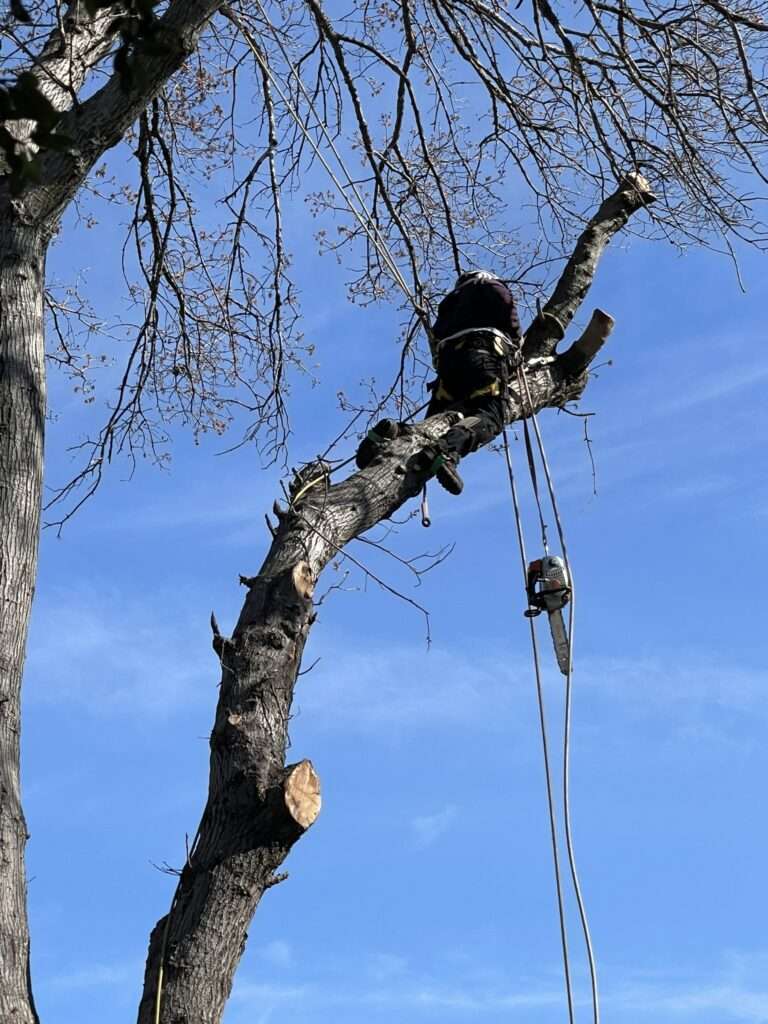
When to Call a Professional Arborist
If your tree is showing any of these signs, don’t wait. A failing tree is a ticking time bomb. A certified arborist can:
✅ Assess tree risk ✅ Determine if it can be treated or stabilized ✅ Perform pruning or structural support ✅ Recommend removal if necessary
Regular inspections = fewer surprises. Protect your property, your safety, and your community.
Internal Links
- Tree Removal Services in Arlington
- Tree Removal Services in Keller
- Tree Removal Services in Fort Worth
- Tree Removal Services in Grand Prairie
- Tree Removal Services in Dallas
- Tree Removal Services in Trophy Club
- Emergency Tree Services
- Tree Trimming and Pruning
External Resources
FAQs
1. How often should I inspect my trees?
- At least once a year, or after severe weather.
2. Can a leaning tree be saved?
- Sometimes. If the roots are intact, cabling or staking might help. But if the roots are damaged, removal is usually best.
3. What’s the most dangerous sign of tree failure?
- Sudden leaning, large cracks, or uprooted roots. These trees could fall at any moment.
4. Can I treat tree decay myself?
- Not really. You can improve soil conditions and prune deadwood, but serious decay needs professional treatment.
5. When should I remove a tree?
- If it’s leaning dangerously, has severe decay, or poses a risk to structures or people.
If you’ve got an unstable tree on your hands, act now. The longer you wait, the bigger the risk. Contact a certified arborist today!


